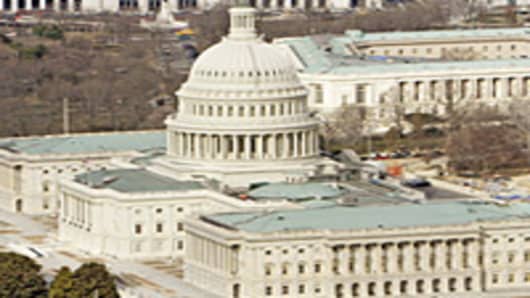Despite calls to shake up the ratings establishment, the industry’s “issuer-pay” system is deeply entrenched. And, while the services have taken some steps to mitigate conflicts, they reject the idea that they should have been more vigilant.
“This is not an effort to remake the industry,” Jerome Fons, a former managing director of credit policy at Moody’s, said of the administration’s proposals. “If we believe the system is broken, this doesn’t offer a fix.”
The rating services play a crucial role in the capital markets by rating everything from plain-vanilla corporate bonds to trickier “structured” investments. By law, banks must take ratings into account when investing in bonds. Big money managers often base investment guidelines on them.
But over the last decade, the rating services helped Wall Street repackage mortgages into securities, thereby fostering the spread of risky lending that eventually imperiled the economy. Many securities that had been rated AAA are now worthless.
Yet now the agencies appear poised to retain their lucrative, and well-protected, perch. Many of the proposals laid out Wednesday are vague principles or paper standards that go little beyond changes being contemplated by the Securities and Exchange Commission, or even the rating agencies themselves.
The proposals call for the agencies to improve disclosure and release more detailed information, as well as establish policies for “managing and disclosing conflicts of interest.”
But the plan does not alter the issuer-pay model, whereby the companies selling securities pay to have them rated. Nor does it encourage competitors to enter the industry, which many regard as an oligopoly.
The proposal does call for regulators to reduce their reliance on agency ratings when deciding whether structured investments are safe enough for banks, insurance companies, pension funds and money market mutual fund investors. Regulators should encourage more independent analysis, a Treasury official said, but the administration did not propose an alternative standard.
Many of the other proposals rehash “best practices” that the major agencies were either moving toward or had already begun to employ. For example, the proposal calls for disclosing ratings methodology and the types of risks that the services do — and do not — assess.
It also would require the agencies to distinguish between their grades for complex mortgage-related investments and more traditional bonds, one of the few elements of the proposal that the industry strongly opposes.
“It’s like a scarlet letter,” George Miller, the head of the American Securitization Forum, said of the possible designation. “It indicates that there is something to be aware of, but it doesn’t tell you what it is.” He also said such a step would be a burden for some investors, who would have to rewrite their investment guidelines.
But the proposals do little to address the behavior that contributed to the crisis, industry critics maintain. “Lacking any significant performance history, rating agencies rated unratable products for regulatory approval and escaped liability for doing so under First Amendment protection,” said Joseph Mason, a finance professor at Louisiana State University. “Nothing in the Treasury proposal changes that.”
The ratings proposals are part of a broader plan to revive and overhaul the securitization markets, which supply roughly two-thirds of the credit in the economy (banks provide the rest, with loans). To keep banks and other lenders from bundling the riskiest loans, the administration proposed requiring loan originators to keep 5 percent of loans that they package, so the banks have their own money at stake.
While that step, in theory, should make banks more careful, industry experts said they were unsure if it would. After all, in the current crisis, many banks got stuck holding too many risky mortgage bonds. “The reason why so many investment banks got into difficulty was that they did have skin in the game,” said Lawrence J. White, a New York University economics professor.
But the proposal gives regulators the flexibility to adjust the size of the banks’ interest in the securities and leaves room for institutions to offset some risk to ensure they are sound. Given the failures of the credit rating industry — and the conflicts laid bare by the mortgage collapse — some industry experts said the Obama administration is missing a rare chance to rework the industry. “It’s the equivalent of grabbing the rating agencies by the lapels, shaking them, and saying ‘do a better job,’ ” said Professor White. “This was a big-time missed opportunity.”
More From CNBC.com:


